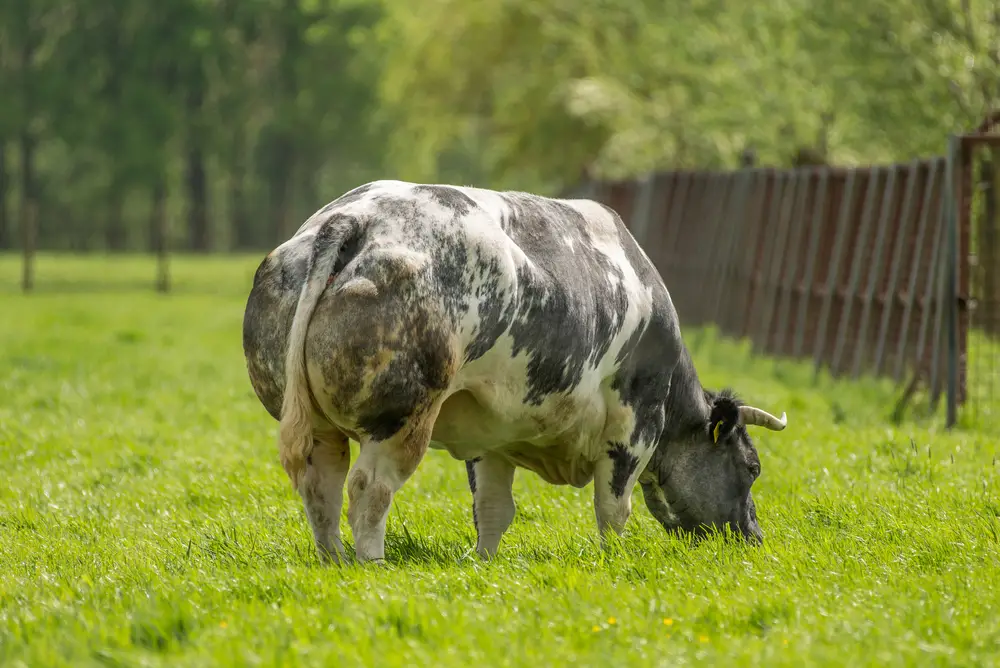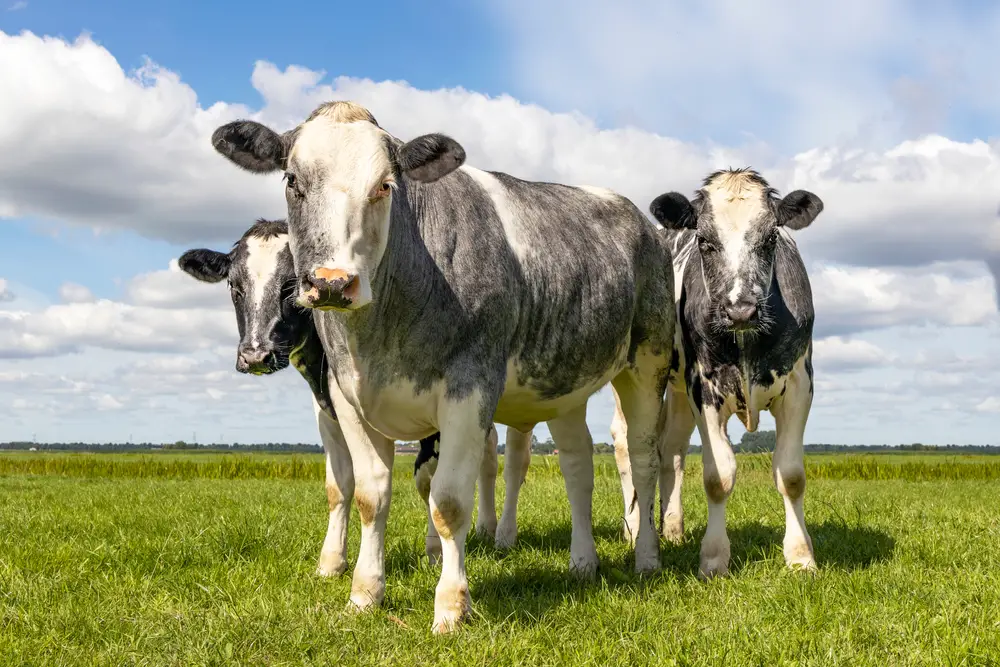The Belgian Blue is a cattle specimen to behold with distinctive double-muscling reminiscent of a body-builder. This unique conformation is just one of the many attributes that make Belgian Blue cattle worthy of consideration as an addition to any farming operation.
Belgian Blue cattle are a dual-purpose breed of beef cattle that can be used for crossbreeding programs and milk production.
Table of Contents
Where Does The Belgian Blue Come From?
Belgian Blue cattle are originally from upper Belgium, and it wasn’t until the 19th century that Shorthorn cattle were imported from the United Kingdom alongside Charolais cattle from France to improve the native dairy type of cattle.
From 1920 through 1950, breeders were actively selecting for animals that had heavier muscling and were trying to improve the dairy breed into a dual-purpose breed.
Professor R. Hanset was working in the Liege Province in the 1960’s at an artificial insemination plant, and was pivotal in the discovery and subsequent success of linebreeding the myostatin gene for double muscling into Belgian Blue cattle.
This meant that Belgian Blue cattle develop differently when creating muscle fibers, doubling the amount of fibers rather than the size.
Today, these muscled cattle are known for carcass quality and yields, ease of fattening and high birth weights.
They have become popular cattle in several countries throughout the world, with an estimated population of 100,000+.

Several cattle associations exist for Belgian Blues in different countries including:
| International Association of Belgian Blue Cattle Breeders | Belgium |
| Canadian Belgian Blue Association | Canada |
| The British Blue Cattle Society | Great Britain |
| Irish Belgian Blue Cattle Society | Ireland |
The Belgian Blue Herd Book was built from 16 international herd books from different associations around the world and exists as a testament to the popularity, profitability, and usefulness of this breed.
Belgian Blue Breed Characteristics
| Official Breed Name | Belgian Blue Cattle |
| Scientific Name | Bos taurus |
| Other Names | Blue, Belgian White Blue, Race de la Moyenne et Haute Belgique, Blue Pied, Blanc-Bleu Belge, Belgian White, Belgian Blue White, and British Blue |
| Origin | Belgium |
| Appearance | Large, distinctive conformation with double muscling. Blue-grey hair color, with body colors that can be white, blue, blue roan, and black |
| Calf Weight | 97lbs to 103lbs |
| Mature Cow Weight | 1700lbs |
| Mature Cow Height | 4.5 feet |
| Mature Bull Weight | 2700lbs |
| Mature Bull Height | 4.7 feet |
| Ready To Breed | 13 to 15 months |
| Gestation Period | Between 279 and 287 days |
| First Calvings | 23 months to 32 months |
| Time to Slaughter | 8 to 9 months |
| Carcass Weight | 1000 to 1100lbs |
| Expected Lifespan | 20 years |
| Productive Lifespan | 5+ years |
| Known For | Muscle growth Tender meat Maternal aptitude Carcass composition |
| Climate | Known to perform in both warm and cold climates |

Belgian Blue Cattle Weaknesses
While the Belgian Blue breed is highly regarded, it also suffers some setbacks:
- Some cows may have difficulty calving and dystocia leading to a small number of calves born by caesarean because of their large size relative to a small birth canal. This typically occurs on stud farms in Belgium during pedigree breeding.
- They require a high protein rather than a high fiber diet when finishing due to increased muscle yield.
- Several genetic defects may also be present in small percentages of Belgian Blues including Congenital Muscular Dystonia 1 and 2, Crooked Tail Syndrome, Prolonged Gestation, Dwarfism, Hamartoma, Arthrogryposis, NNAPC4
What Is So Special About Belgian Blue Cattle?
Besides its looks, this dual-purpose breed from Belgium has a lot to offer farmers.
Meat Production
Belgian Blues are a breed with an inheritable recessive phenotype trait called double muscling.
Only one other bovine breed has this trait – Piedmontese cattle.
This trait produces double the amount of fine muscle fibers and results in incredibly tender lean meat. Belgian Blue beef has high amounts of marbling in the meat itself, offering delicious flavor.
Belgian Blues are able to convert feed into large amounts of muscle mass that ultimately yields a highly desirable carcass. It has one of the highest carcass yields of any bovine, with crossbred specimens providing 70 percent carcass yield, while purebred Belgian Blue offers up to a 77 percent yield.
Belgian Blues have roughly half the fat cover that Hereford-Angus cattle have, and 14.2 percent more ribeye area.
Milk Production
Originally a milk production breed, Belgian Blue cows produce 4000 to 6000 liters per day with 3.48 percent fat content and 3.23 percent protein.
The milk quality is considered average for a milking breed and this milk is good for human consumption, though it is rarely used in producing other milk products.
Why Should I Raise Belgian Blue Cattle On My Farm?
Farmers typically buy Belgian Blue Cattle because:
- Belgian Blue bulls can be used as terminal sires for crossbreeding programs and have been shown to help with calving ease in other Continental beef breeds including Simmental and Friesian.
- High cutability and meat is sought after by packers and is proven profitable
- According to the British Blue Cattle Society, feed conversion is 13% better than other continental breeds
- Conformity is high in Belgian Blue cattle
- The first calving age for heifers is slightly less than average and can begin at 23 months
